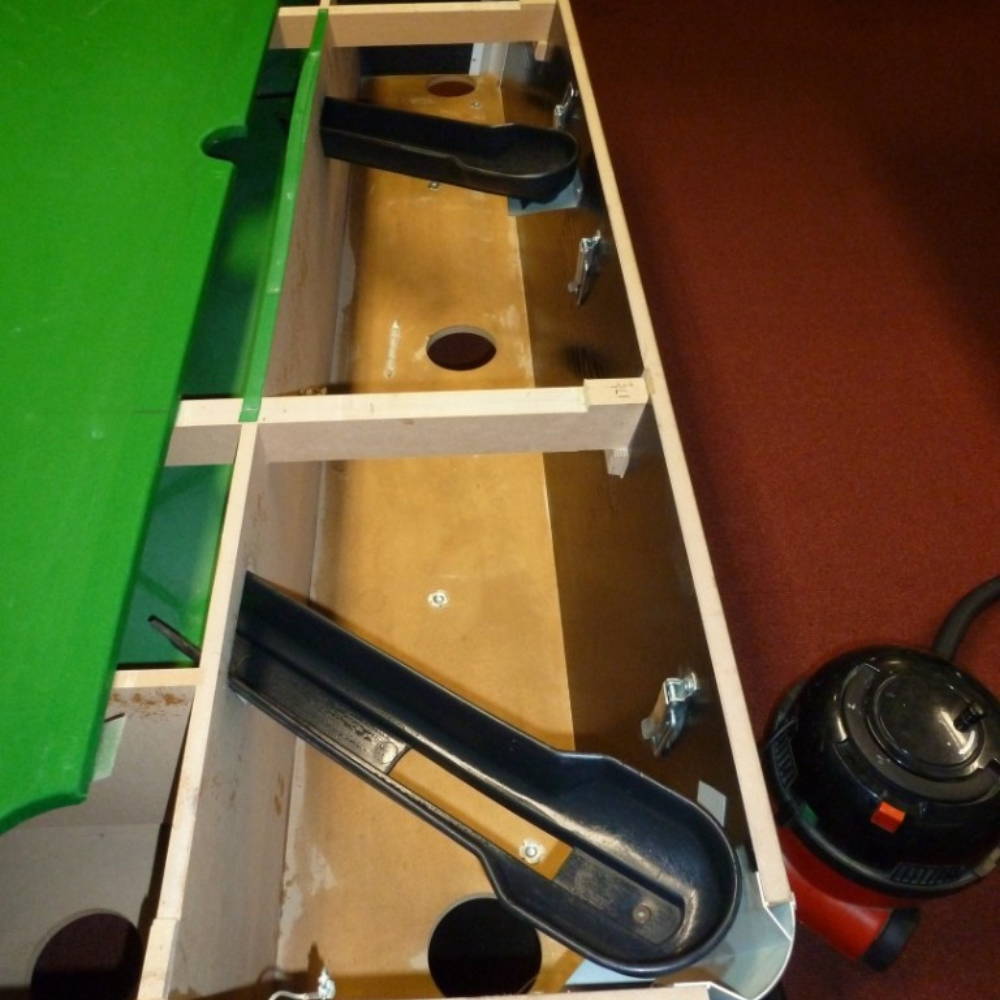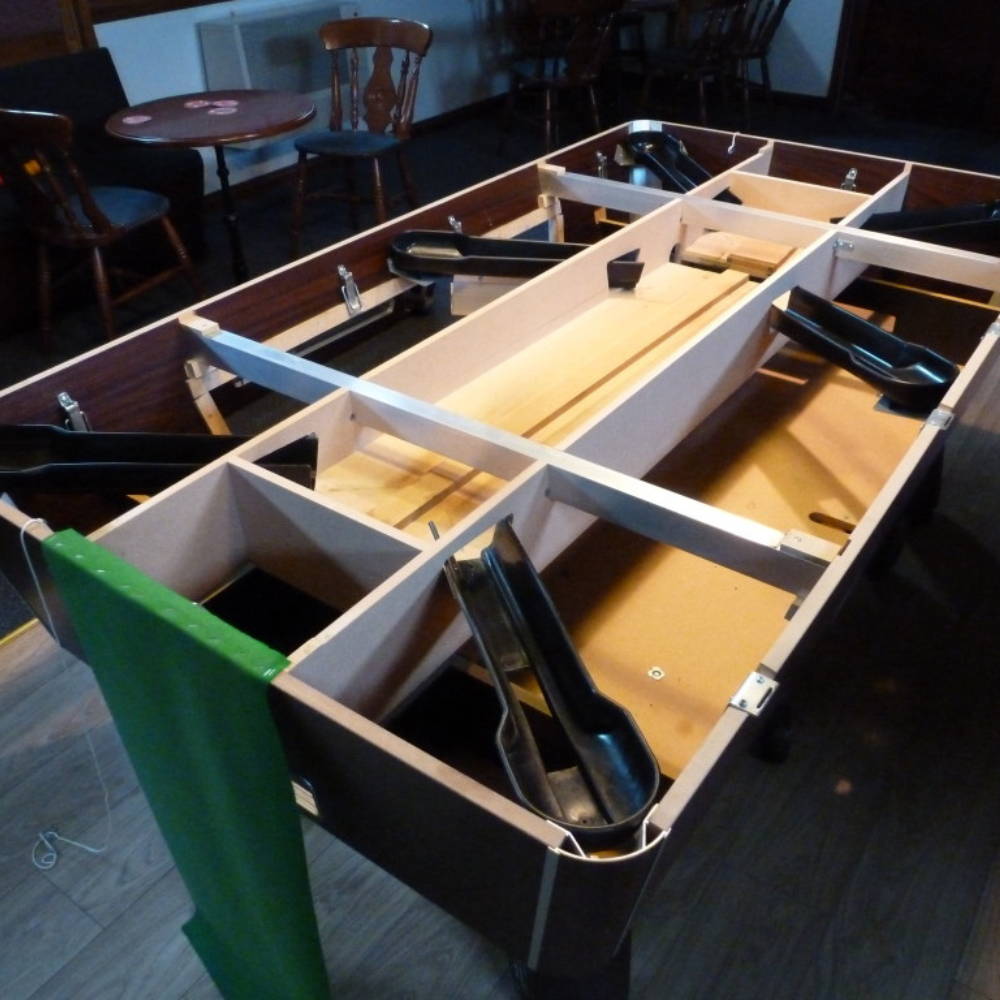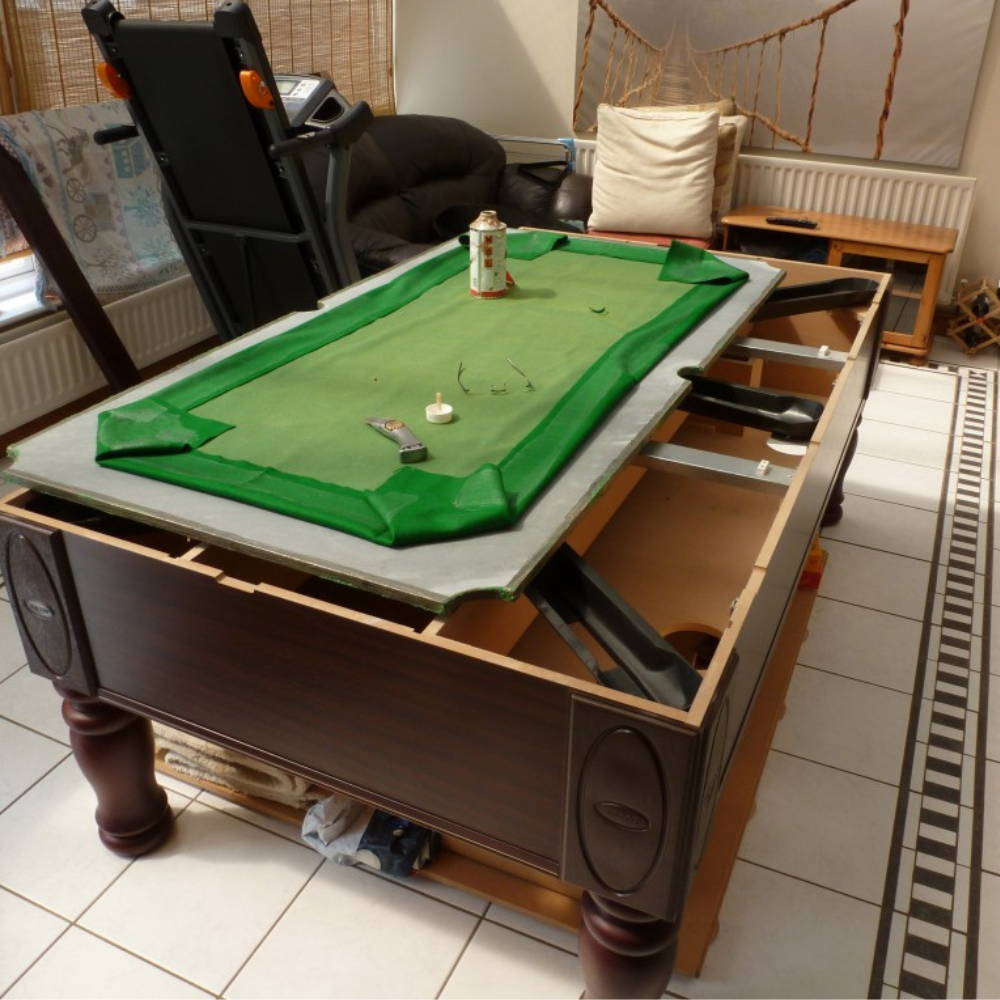What Does the Inside of a Pool Table Look Like?
For many of us, a pool table represents hours of camaraderie, strategy, and skillful play. But beyond the polished exterior and smooth felt surface, there lies a world of intricate design and craftsmanship that contributes to the overall gameplay experience. This article aims to demystify the hidden world beneath the felt, exploring the inner workings of a pool table.

1. The Frame and Cabinet
The core foundation of any pool table, the frame provides the necessary support and stability. A sturdy frame ensures consistent play over the years.
- Materials: Frames are typically constructed from solid wood, medium-density fibreboard (MDF), or metal. Solid wood frames, often made from oak, mahogany, or maple, are considered premium and can significantly influence a pool table's price.
- Leg Construction: The legs, an integral part of the frame, bear the table's weight. They are either integrated into the frame or attached separately.
2. Slate Bed
The heart of a pool table, the slate bed, is responsible for the smooth, flat playing surface we all cherish.
- Slate Quality: Premium pool tables usually have slate sourced from Italy or Brazil, known for producing some of the finest quality slate. The thickness can vary, but 1-inch slate is often sought after for optimal play.
- Multiple Pieces: While some tables feature a single slate piece, others might have two or three pieces. These are precision-ground to ensure a seamless fit.
3. Cushion and Rails
The cushions or rails contribute significantly to the game dynamics.
- Rubber Cushions: These determine how the balls rebound off the table edges. Quality rubber cushions maintain their bounce over the years, ensuring consistent play.
- Sub-rails: Beneath the visible wooden rails are sub-rails, usually made of wood. They enhance the cushion's height and play a role in pocket design.
4. Pockets
The ultimate target in pool, pockets come in various styles and constructions.
- Drop Pockets: Typically found in home or casual tables, balls stay in these leather or plastic pockets after being potted.
- Ball Return System: Common in coin-operated or professional tables, this series of chutes and gutters channels potted balls to a collection area or dispenser.
5. The Cloth or Felt
While the felt is what players often see and interact with, its attachment to the slate is crucial.
- Types: Wool, often combined with nylon, is the traditional material. However, worsted wool, smoother and faster, is becoming increasingly popular.
- Attachment: The felt is stretched over the slate and secured. Underneath, it's glued or stapled, depending on the table's design and the preferred method of attachment.

6. Climate Adjusters (For Some Tables)
While not present in all tables, climate adjusters are essential components in some high-end models.
- Function: These are adjustable components that compensate for changes in humidity and temperature, ensuring the slate remains perfectly level.
- Material: Typically made of metal, these adjusters can be tightened or loosened as required.
7. Undercarriage and Levelling Systems
Ensuring a flat play surface, the undercarriage and levelling systems are crucial for an optimal gaming experience.
- Levelling Systems: These are either integrated legs or separate levelling mechanisms that can be adjusted to ensure the playing surface remains level.
- Support Systems: Cross beams and other support structures underneath the table ensure even weight distribution and additional stability.
8. Hidden Accessories Compartment (In Some Tables)
Some modern or custom tables come with hidden compartments beneath the playing surface.
- Storage: Ideal for storing cues, balls, chalk, and other accessories.
- Design: Craftily integrated into the table's design, these compartments are often lined with felt or velvet to protect the stored items.
9. Aesthetic Elements
Beyond the functional components, many tables come with decorative elements that might be hidden from plain view.
- Veneers and Inlays: Exquisite wood veneers or inlays might be present in the table's underside, visible only when one looks or when the table is being assembled.
- Branding: The table's underside might also house branding elements or signatures, especially if it's a designer or limited-edition piece.
10. The Science Behind Slate
The slate's importance in pool tables cannot be overstressed. But why slate? This metamorphic rock has specific properties making it ideal for the playing surface:
- Uniform Density: Slate's homogeneous nature ensures a consistent ball roll.
- Low Moisture Absorption: This characteristic makes it less prone to warping, maintaining a flat surface over the years.
To guarantee optimal play, the slate is often honed to a perfectly flat surface with a tolerance level of less than a hundredth of an inch.

Conclusion
A pool table is not just an assembly of wood, slate, and felt. It's a harmonious blend of engineering, craftsmanship, and artistry. While players interact with its surface, understanding its interior intricacies provides a deeper appreciation for the game and the craftsmanship that goes into each table.
Whether you're a casual player or a pool enthusiast, the next time you take a shot, remember the complex world that exists beneath the ball's trajectory. It's this hidden realm that, pound for pound, ensures every game is as enjoyable, challenging, and fair as the last.
Are you looking for a Pool Table? check out our pool tables range Pool Tables





